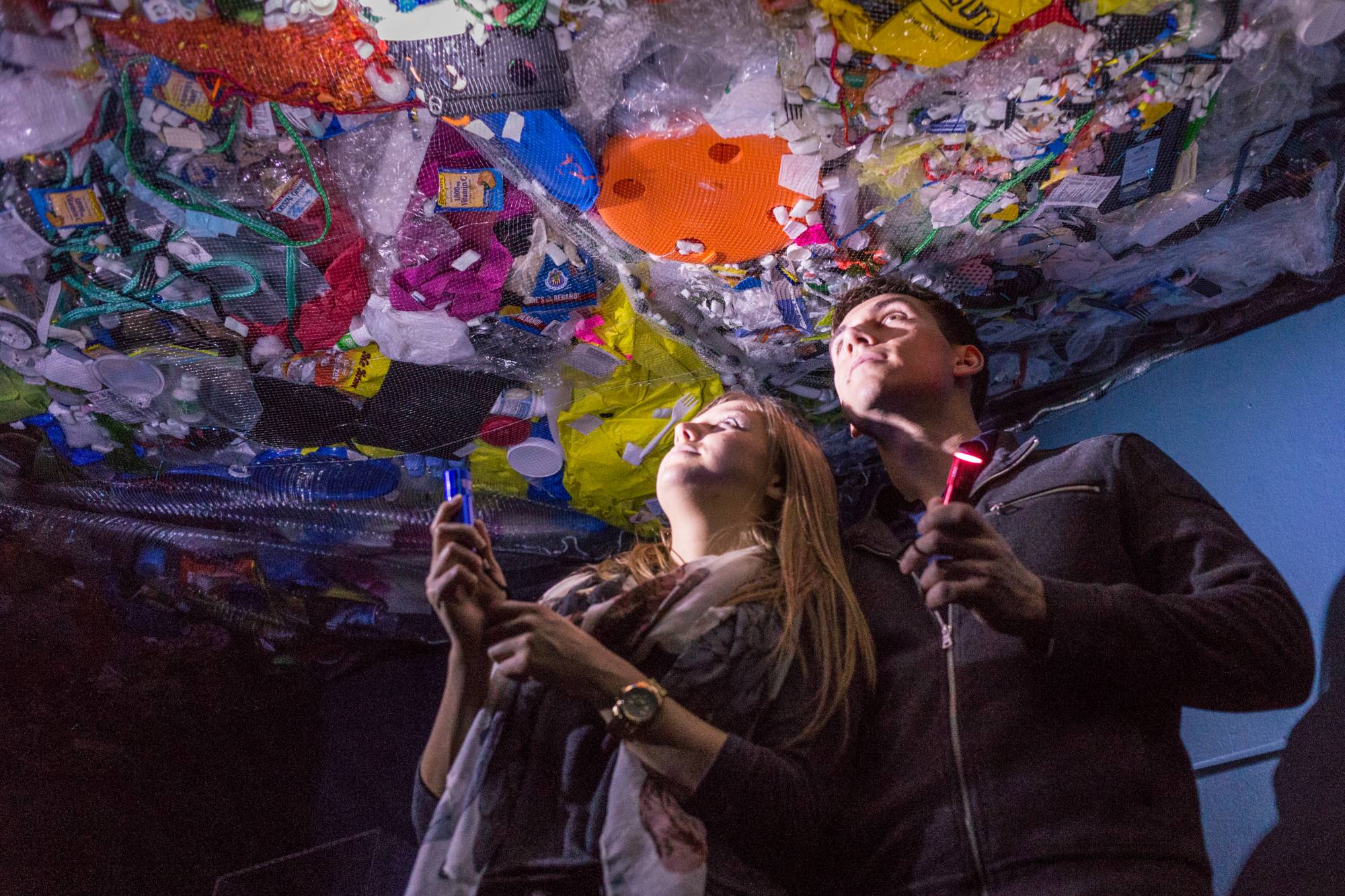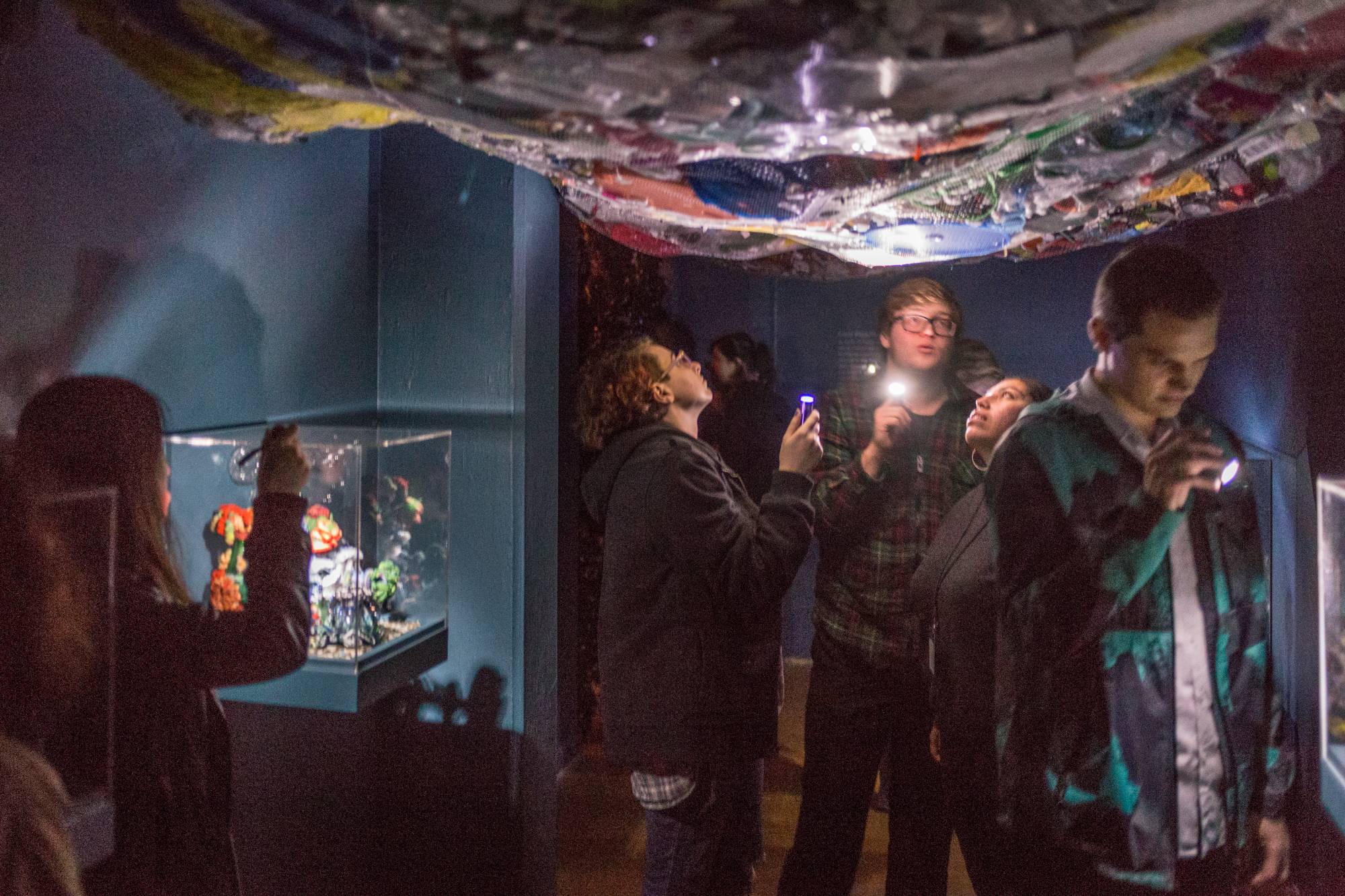This Art is Rubbish
When the Wertheim sisters began crocheting plastic they decided to keep all their domestic plastic trash as an exercise in consumer self-awareness. After a week they were disgusted. After a month, appalled. So they kept on going for four years – from January 2007 to April 2011 – keeping every plastic bag, bottle, wrapping, and container they brought into their home. This conglomeration of two individuals’ domestic plastic rubbish is exhibited now as an artwork called The Midden – 440 pounds of personalized trash that represents far less than the average North American’s consumption. Each US citizen now generates on average 230 pounds of plastic waste per year. At that rate, the Wertheims’ Midden would be four times larger than it is. Though the US is 4% of the worlds population, its people generate 17% of global plastic trash. [See table below.]
The monumental yet still graspable scale of The Midden often elicits a reaction from audiences of “that’s not so much.” However there’s nothing like having to keep and wash all your trash to make you think twice about what you bring home from the supermarket, and the sisters radically altered their lifestyle in an effort to cut down. Any plastic item contaminated by food or organic matter quickly goes off, so washing and rewashing becomes a continual, increasingly tedious part of the process, providing daily incentive to accumulate less.
We encourage everyone to try this exercise for themselves. For a month. Or even a week. You’ll be astounded how quickly it builds up.




